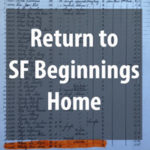

Korean immigration of the early 1900s was profoundly affected by the rise of Japanese power in Korea. Many early immigrants came here to escape from life under the Japanese and wanted nothing more than to see Korea’s independence restored. The fight for independence gave the Koreans in America reasons to mobilize, advocate for themselves and to fundraise. While doing so, they became political participants in the US as a distinct immigrant group. According to Professor Richard Kim in The Quest for Statehood, “Korean nationalism ironically was central to the Americanization of Korean immigrants.”
Source: Richard E. Kim, Quest for Statehood, 6. Won-yong (Warren) Kim, Chaemi Hanin Oshipnyun Sa [Fifty-Year History of Koreans in America], 233.
Most Asian immigrants, including Koreans, were not allowed to become naturalized US citizens until 1952.
This contributed to the early Korean immigrants’ patriotic fervor for their mother country.
PHASE I – 1905
PHASE I began in 1905 when Japan declared Korea a protectorate and took over all diplomatic functions of Korea. San Francisco Koreans responded to this news immediately by establishing the first Korean political organization on the mainland US, Gongnip “Hyup Hui” Association (aka “Mutual Assistance Association”). Key accomplishments of Gongnip Association were:
Adopting a resolution protesting Japan’s aggression and refusing to recognize Japan’s authority over Koreans in America.
Refusing to accept any relief funds through the Japanese consulate after the 1906 San Francisco earthquake.
Launching a public relations campaign in the US and around the world to expose Japan’s aggression and to seek support for Korea’s independence.
Publishing the first weekly Korean newspaper on the mainland US, Gongnip Shinbo, starting on November 20, 1905. For the Korean community, Gongnip Shinbo was a vital source of local community news as well as news about Korea.
PHASE II – 1910
PHASE II began with Japan’s annexation of Korea in 1910. The Korean National Association (KNA) firmly established its leading role as the representative of the Koreans in America. In the process, the KNA learned how to organize and advocate for its immigrant community.
On July 3, 1910, the KNA held a conference for all regional representatives and adopted a 9-point resolution. First and foremost, they resolved that Japan was the enemy of the Koreans in America and committed to pursue hostile actions against Japan.
The 9-point resolution of July 3, 1910, was delivered to King Kojong of Korea and the Emperor of Japan with separate letters. In the letter to the Emperor of Japan, the KNA as the representative of all Koreans in America pleaded with him to cancel the annexation of Korea and instead cultivate an amicable relationship between the two countries. The letter warned that if the annexation was not stopped, the two countries will forever become enemies and will bring great disturbance to the peace in Asia.
During the Hemet incident in 1913 involving Korean fruit pickers, in response to a letter written by Rev. David Lee as the president of the KNA, the US Secretary of State Bryan acknowledged that Koreans in America were not Japanese subjects. From that point on, Koreans in America were formally distinguished from the Japanese and the KNA was recognized as their representative.
The headlines in the September 21, 1910 issue of the Shinhan Minbo reflected the community’s immense grief and sorrow about the annexation:
“Alas, fellow Koreans, our country that has lasted for 4,000 years has been destroyed today.”
“Alas! My Korea is Gone!”
“On August 29, 1910, we bid farewell to our country. Now we are people with no country, no history, no freedom and no sovereignty.”
PHASE III – 1918
PHASE III started in 1918, then picked up momentum with the news of the March 1, 1919 protest in Korea. The community responded with tireless fundraising to support the movement and it did not stop until Korea gained independence in 1945. Despite hardships in their own lives, the Korean pioneers made immense sacrifices with their time and money.
In 1918, US President Woodrow Wilson gave the “Fourteen Points” speech in which he articulated his doctrine of self-determination. To the Koreans, President Wilson’s doctrine of self-determination for the former colonies of Europe provided the validation they were looking for for Korea’s right to independence from Japan.
By March 1, 1919, the KNA had a vast organizational network not just in the US and in Hawaii, but in Vladivostok and Siberia, Russia; Merida (Yucatan), Oaxaquena (Vera Cruz) and Hermosillo (Sonora), Mexico; and Manchuria. The KNA’s immediate response to the protest was to raise funds to support the movement in Korea. It instituted a “patriotic contribution” (or “Ai-guk-gum”) equivalent to 5% of a person’s income. Once the Korean Provisional Government (“KPG”) was established later that year, the KNA’s main roles shifted to fundraising and lobbying.
Dr. Seo Jae Pil organized the meeting of the Korean Congress in Philadelphia from April 14 to 16, 1919. More than 200 delegates from the Korean diasporic communities around the world attended before prominent American guests and the media. The main purpose of the Korean Congress was to rally the support of the Americans and the world for Korea’s independence. To that end, all of the speeches and discussions at the event were in English. The Korean Congress ended symbolically with the reading of the Proclamation of Independence of Korea just as America’s founding fathers proclaimed the Declaration of Independence in that city more than a hundred years before.










